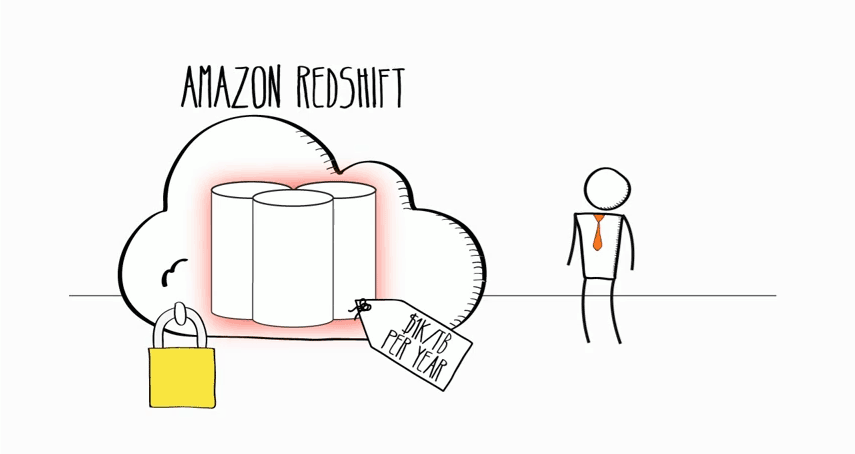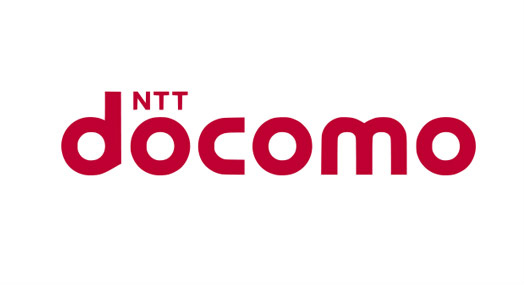Amazon Redshift is a fast, fully managed, petabyte-scale data warehouse that makes it simple and cost-effective to analyze all your data using your existing business intelligence tools. Start small for $0.25 per hour with no commitments and scale to petabytes for $1,000 per terabyte per year, less than a tenth the cost of traditional solutions. Customers typically see 3x compression, reducing their costs to $333 per uncompressed terabyte per year.
Try Amazon Redshift for free
Start Free TrialLearn More
Get 750 free DC1.Large hours per month for 2 months. To start the trial:
Create an AWS account and sign in to the Amazon Redshift Console
Launch an Amazon Redshift cluster and select DC1.Large for Node Type
Report and ingest data for free using our Partner Free Trials
Simplify Management of Amazon Redshift Snapshots using AWS Lambda | 07/15/2016 | AWS Big Data Blog
Learn about Amazon Redshift in our new Data Warehousing on AWS Class | 06/02/2016 | AWS Blog
Up to 2X Throughput and 10X Vacuuming Performance Improvements | 05/24/2016 | AWS Blog
Real-time in-memory OLTP and Analytics with Apache Ignite on AWS | 05/13/2016 | AWS Big Data Blog
Encrypt Your Amazon Redshift Loads with Amazon S3 and AWS KMS | 04/07/2016 | AWS Big Data Blog
Amazon Redshift delivers fast query performance by using columnar storage technology to improve I/O efficiency and parallelizing queries across multiple nodes. Amazon Redshift has custom JDBC and ODBC drivers that you can download from the Connect Client tab of our Console, allowing you to use a wide range of familiar SQL clients. You can also use standard PostgreSQL JDBC and ODBC drivers. Data load speed scales linearly with cluster size, with integrations to Amazon S3, Amazon DynamoDB, Amazon Elastic MapReduce, Amazon Kinesis or any SSH-enabled host.
Amazon Redshift’s data warehouse architecture allows you to automate most of the common administrative tasks associated with provisioning, configuring and monitoring a cloud data warehouse. Backups to Amazon S3 are continuous, incremental and automatic. Restores are fast; you can start querying in minutes while your data is spooled down in the background. Enabling disaster recovery across regions takes just a few clicks.
Security is built-in. You can encrypt data at rest and in transit using hardware-accelerated AES-256 and SSL, isolate your clusters using Amazon VPC and even manage your keys using AWS Key Management Service (KMS) and hardware security modules (HSMs). All API calls, connection attempts, queries and changes to the cluster are logged and auditable. You can use AWS CloudTrail to audit Redshift API calls.
Amazon Redshift uses a variety of innovations to obtain very high query performance on datasets ranging in size from a hundred gigabytes to a petabyte or more. It uses columnar storage, data compression, and zone maps to reduce the amount of I/O needed to perform queries. Amazon Redshift has a massively parallel processing (MPP) data warehouse architecture, parallelizing and distributing SQL operations to take advantage of all available resources. The underlying hardware is designed for high performance data processing, using local attached storage to maximize throughput between the CPUs and drives, and a 10GigE mesh network to maximize throughput between nodes.
With a few clicks of the AWS Management Console or a simple API call, you can easily change the number or type of nodes in your cloud data warehouse as your performance or capacity needs change. Dense Storage (DS) nodes allow you to create very large data warehouses using hard disk drives (HDDs) for a very low price point. Dense Compute (DC) nodes allow you to create very high performance data warehouses using fast CPUs, large amounts of RAM and solid-state disks (SSDs). Amazon Redshift enables you to start with as little as a single 160GB DC1.Large node and scale up all the way to a petabyte or more of compressed user data using 16TB DS2.8XLarge nodes. While resizing, Amazon Redshift places your existing cluster into read-only mode, provisions a new cluster of your chosen size, and then copies data from your old cluster to your new one in parallel. You can continue running queries against your old cluster while the new one is being provisioned. Once your data has been copied to your new cluster, Amazon Redshift will automatically redirect queries to your new cluster and remove the old cluster.
You pay only for the resources you provision. You can choose On-Demand pricing with no up-front costs or long-term commitments, or obtain significantly discounted rates with Reserved Instance pricing. On-Demand pricing starts at just $0.25/hour per 160GB DC1.Large node or $0.85/hour per 2TB DS2.XLarge node. With Partial Upfront Reserved Instances, you can lower your effective price to $0.10/hour per DC1.Large node ($5,500/TB/year) or $0.228/hour per DS2.XLarge node ($999/TB/year). To see more details, visit the Amazon Redshift Pricing page.
With a few clicks in the AWS Management Console or simple API calls, you can create a cluster, specifying its size, underlying node type, and security profile. Amazon Redshift will provision your nodes, configure the connections between them, and secure the cluster. Your data warehouse should be up and running in minutes.
Amazon Redshift handles all the work needed to manage, monitor, and scale your data warehouse, from monitoring cluster health and taking backups to applying patches and upgrades. You can easily resize your cluster as your performance and capacity needs change. By handling all these time-consuming, labor-intensive tasks, Amazon Redshift frees you up to focus on your data and business.
Amazon Redshift has multiple features that enhance the reliability of your data warehouse cluster. All data written to a node in your cluster is automatically replicated to other nodes within the cluster and all data is continuously backed up to Amazon S3. Amazon Redshift continuously monitors the health of the cluster and automatically re-replicates data from failed drives and replaces nodes as necessary.
Amazon Redshift’s automated snapshot feature continuously backs up new data on the cluster to Amazon S3. Snapshots are continuous, incremental and automatic. Amazon Redshift stores your snapshots for a user-defined period, which can be from one to thirty-five days. You can take your own snapshots at any time, which leverage all existing system snapshots and are retained until you explicitly delete them. Redshift can also asynchronously replicate your snapshots to S3 in another region for disaster recovery. Once you delete a cluster, your system snapshots are removed but your user snapshots are available until you explicitly delete them.
You can use any system or user snapshot to restore your cluster using the AWS Management Console or the Amazon Redshift APIs. Your cluster is available as soon as the system metadata has been restored and you can start running queries while user data is spooled down in the background.
With just a couple of parameter settings, you can set up Amazon Redshift to use SSL to secure data in transit and hardware-accelerated AES-256 encryption for data at rest. If you choose to enable encryption of data at rest, all data written to disk will be encrypted as well as any backups. By default, Amazon Redshift takes care of key management but you can choose to manage your keys using your own hardware security modules (HSMs), AWS CloudHSM, or AWS Key Management Service.
Amazon Redshift enables you to configure firewall rules to control network access to your data warehouse cluster. You can run Amazon Redshift inside Amazon Virtual Private Cloud (Amazon VPC) to isolate your data warehouse cluster in your own virtual network and connect it to your existing IT infrastructure using industry-standard encrypted IPsec VPN.
Amazon Redshift integrates with AWS CloudTrail to enable you to audit all Redshift API calls. Amazon Redshift also logs all SQL operations, including connection attempts, queries and changes to your database. You can access these logs using SQL queries against system tables or choose to have them downloaded to a secure location on Amazon S3. Amazon Redshift is compliant with SOC1, SOC2, SOC3 and PCI DSS Level 1 requirements. For more details, please visit AWS Cloud Compliance.
Amazon Redshift is a SQL data warehouse solution and uses industry standard ODBC and JDBC connections. You can download our custom JDBC and ODBC drivers from the Connect Client tab of our Console. Many popular software vendors have certified Amazon Redshift with their offerings to enable you to continue to use the tools you do today. See the Amazon Redshift partner page for details.
Amazon Redshift is integrated with other AWS services and has built in commands to load data in parallel to each node from Amazon S3, Amazon DynamoDB or your EC2 and on-premise servers using SSH. AWS Data Pipeline, Amazon Kinesis, and AWS Lambda integrate with Amazon Redshift as a data target. You can also load streaming data into Amazon Redshift using Amazon Kinesis Firehose.




















